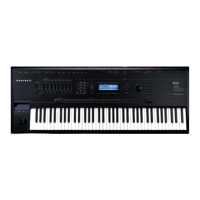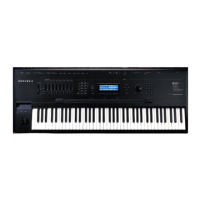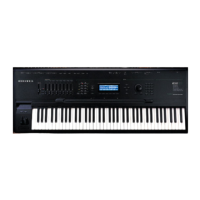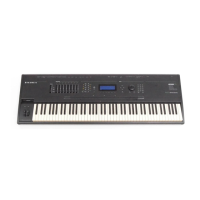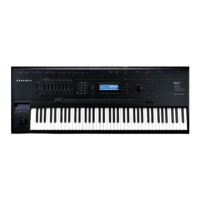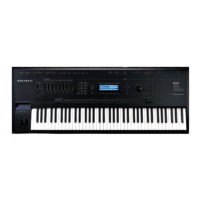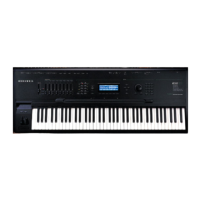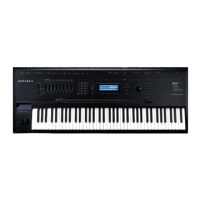User Interface Basics
Mode Selection
3-3
The MIDI LED
Below the cursor buttons is a red LED labeled MIDI. This LED will flash whenever the K2500
receives MIDI information from your MIDI controller.
The CHAN/BANK Buttons
To the left of the display are two buttons labeled “CHAN/BANK.” Their function is related to
the two small arrows—
<|>
—that appear in the top line of many different pages. When you
see these arrows, you can use the CHAN/BANK buttons to scroll the values of the parameter
that appears to the right of the arrows. The arrows don’t have to appear in the top line,
however, for the CHAN/BANK buttons to have an effect. In Program mode, for example, they
shift through the MIDI channels, showing the program assigned to each channel.
When you’re in the Program editor, the CHAN/BANK buttons let you view each layer in the
program. You can see the corresponding parameters in each layer by scrolling through the
layers with these buttons. In the Setup editor, the CHAN/BANK buttons scroll through the
zones in the current setup. In Quick Access mode, they scroll through the Quick Access banks,
and in Song mode they scroll through record tracks.
We’ll let you know, when applicable, what the CHAN/BANK buttons do.
The EDIT Button
The EDIT button activates each of the K2500’s editors, and acts as a shortcut to many pages
within the Program Editor. Pressing the EDIT button tells the K2500 that you want to change
some aspect of the object marked by the cursor. For example, when a program is selected and
you press EDIT, you enter the Program Editor. If a setup is selected, you enter the Setup Editor.
There are editors accessible from every mode except Disk mode. To enter an editor, choose one
of the modes (mode selection), and press EDIT. An editing page for that mode will appear. You
can then select parameters (navigation) and change their values (data entry). If the value of the
selected parameter has its own editing page, pressing the EDIT button will take you to that
Zoom +
Mute 2
P
ower
P
rogram
Mute 1
Zoom -
dit
E
Layer/Zone
C
han/Bank
aster
Mark
Gain +
ffects
FX Bypass
Access
Samp/Sec
Mute 3
etup
QS E MIDI
Gain -
Previous Pg
M
E
Compare
ong
Link
Jump
S
isk
D
xit
MIDI
2500RS
K
olume
ancel
UPPER/lower
V
C
+
/
-
7
STU
Tip=Left
eadphone
H
Ring=Right
iZ
nter
E
H
0-9
0
VWX
8
CLR
Space
9
YZ
Right
Left
4
JKL
ABC
1
oZ
ptical In
MNO
5
DEF
2
6
PQR
3
GHI
L
O
echnology
TSAV
ynthesisrchitectureariable
Sampler
Navigation Data Entry
Mode Selection
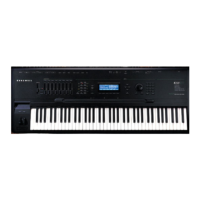
